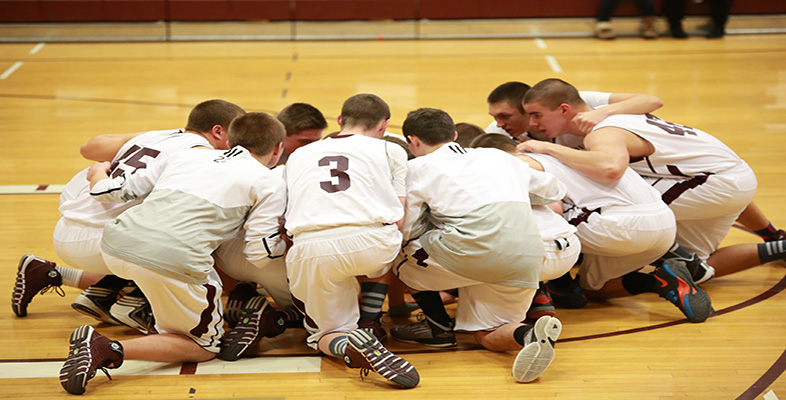Glossary
- adjourning
- The final stage in Tuckman’s model of team development. Team members anticipate the project coming to an end and the team being disbanded.
- Autocratic
- The decision is taken by the team leader or person nominated by the team, see decision-making models.
- baton passing
- Baton passing describes the process whereby project work can be handed from one functional team to another in order to complete the work. This is most common in organisations in which the functional divisions are relatively rigid.
- Consensus
- The decision is made by agreement of all, see decision-making models.
- contract team
- A contract team is a team that typically is brought in from outside an organisation in order to perform the project work.
- decision-making models
- The four models are: Consensus – by agreement of all. Majority rule with minority opinion – the decision is that voted for by the larger number of participants. Those who do not agree can express their disagreement, i.e. their dissenting opinion, and give an alternative view. Majority rule – the decision is that voted for by the larger number of participants. Autocratic – the decision is taken by the team leader or person nominated by the team.
- dissenting opinion
- Those who disagree with the majority, i.e. who have the minority opinion, can express their disagreement as the dissenting opinion, see decision-making models.
- document controller
- A functional role. The document controller coordinates the production of team documents and reports. In small teams this role could fall to the record keeper or team leader.
- dual reporting lines
- A person has dual reporting lines if they report to one manager for some aspects of their work and to another manager for other aspects of their work. This can occur in matrix teams.
- forming
- The first stage in Tuckman’s model of team development. In this stage, team members meet (face-to-face or virtually) and begin to get to know each other.
- functional team
- A functional team is a team in which work is carried out within a functionally organised group, in which people work together to carry out the same or similar functions.
- leadership role in a self-managed team
- The leadership role in a self-managed team is a supporting role, involving identifying the long-term career and personal development needs of the team.
- life cycle
- In the context of teams, a team’s life cycle describes the way in which teams form and develop.
- Majority rules
- The decision is that voted for by the larger number of participants, see decision-making models.
- Majority rules with minority opinion
- The decision is that voted for by the larger number of participants. Those who do not agree can express their disagreement, i.e. their dissenting opinion, and give an alternative view, see decision-making models.
- matrix team
- In a matrix team, individual staff report to different managers for different aspects of their work – to the project manager for their work on the project and their line manager for other aspects of their work.
- norming
- The third stage in Tuckman’s model of team development. The team has established itself and team members are beginning to work productively together.
- performing
- The fourth stage in Tuckman’s model of team development. The team are working productively together, getting on with the task, producing results, with good working relationships between members of the team.
- progress chaser
- A functional role. The progress chaser is a team member who is responsible for monitoring progress and ensuring that the team is keeping to schedule.
- record keeper
- A functional role. The record keeper is someone who takes notes in meetings, keeps a record of what decisions have been taken, who is doing what, and the date of the next meeting.
- role allocation
- The process of allocating roles to individuals within the team.
- self-managed team
- A self-managed team is a team in which members of the team take collective responsibility for ensuring that the team operates effectively and meets its targets.
- storming
- The second stage in Tuckman’s model of team development. This stage in team formation can be characterised by spirited discussions and arguments among the team members.
- swift trust
- In some virtual teams there is no time to build trusting relationships. The team must start work immediately without taking time to build relationships between team members.
- team development
- The fourth phase in the life cycle for virtual team management developed by Hertel et al. (2005). This phase takes place during the definition and execution phases of the project life cycle.
- team leader
- A functional role. The person who leads the team. Even in democratic teams where decisions are taken by the whole team, someone has to take responsibility for chairing meetings. This normally falls to the team leader.
- team rules
- An agreed set of conventions for the ways in which team members work and interact with each other and for conducting the business of the team.
- timed agenda
- A timed agenda allots time to each item on the agenda in order to ensure that later items on the agenda are allocated adequate time for discussion.
- timekeeper
- A functional role. In a synchronous meeting, a timekeeper will help to keep meetings running to time, particularly if the meeting is following a timed agenda.
- trust
- If you trust someone, then you show a willingness to increase your vulnerability to another person whose behaviour you cannot control, in a situation in which your potential benefit is much less than your potential loss if the other person abuses your vulnerability (definition based on Gignac, 2005).
- Tuckman’s model
- Tuckman’s model of team formation. A model of team formation and development that has five stages: forming, storming, norming, performing and adjourning.
